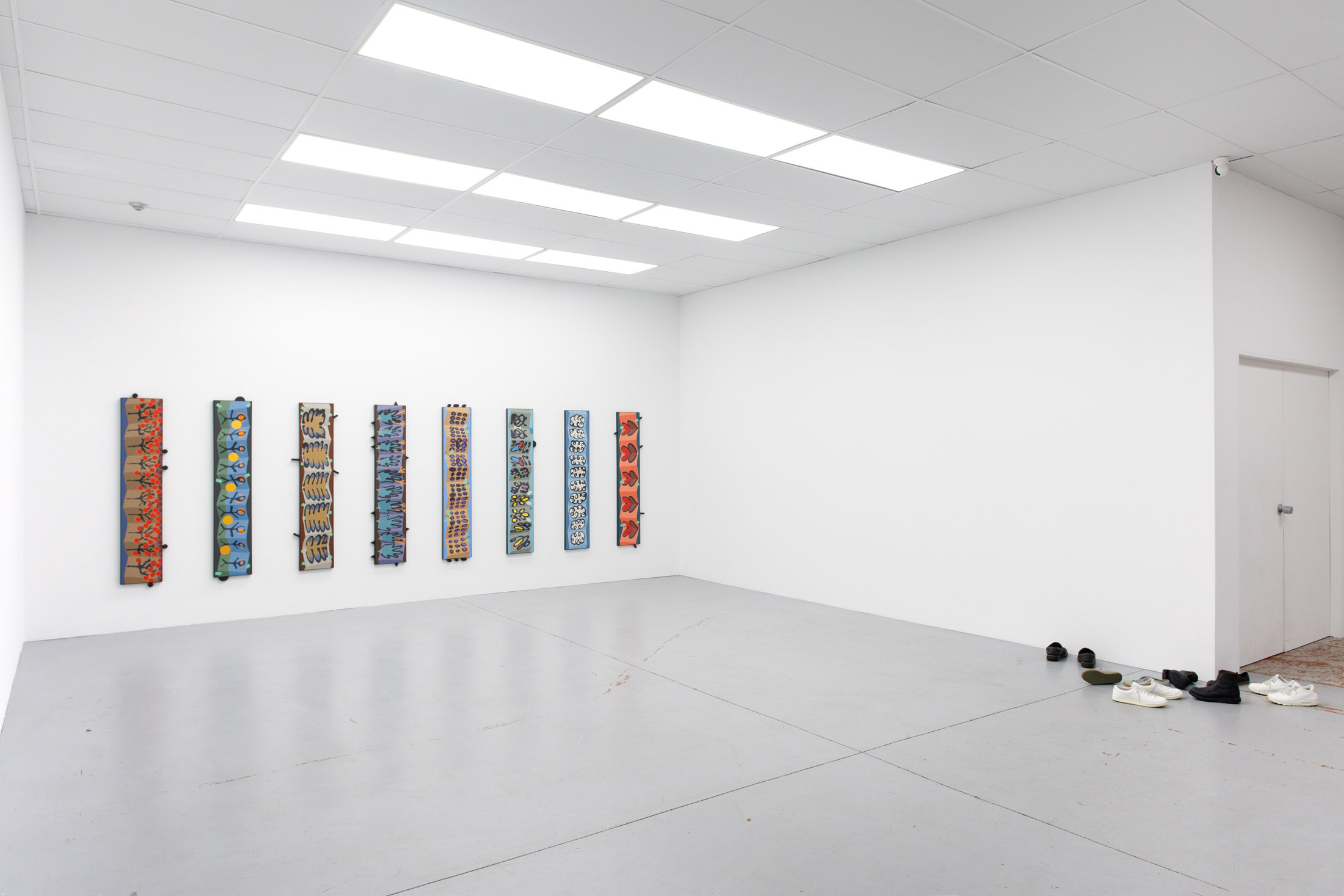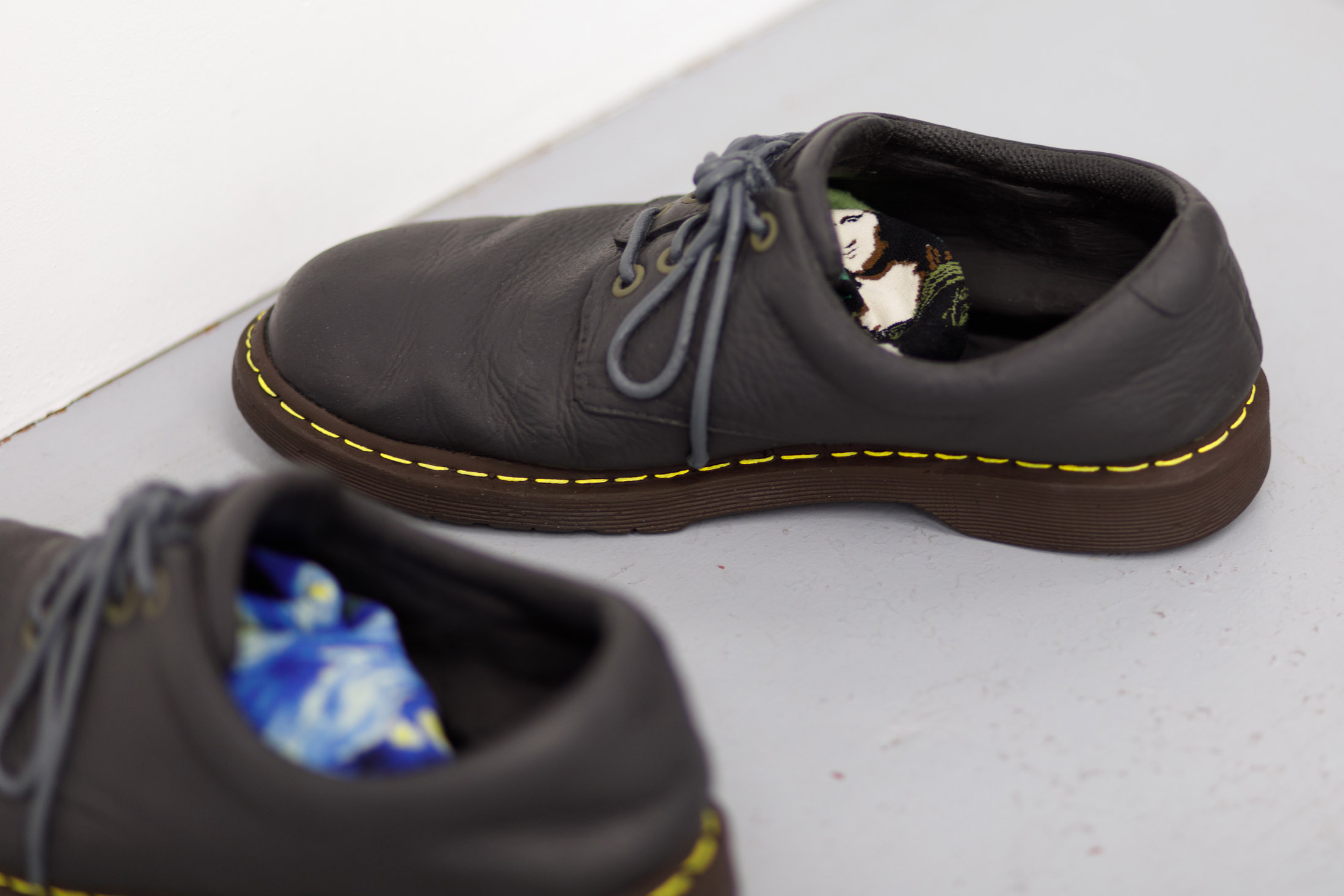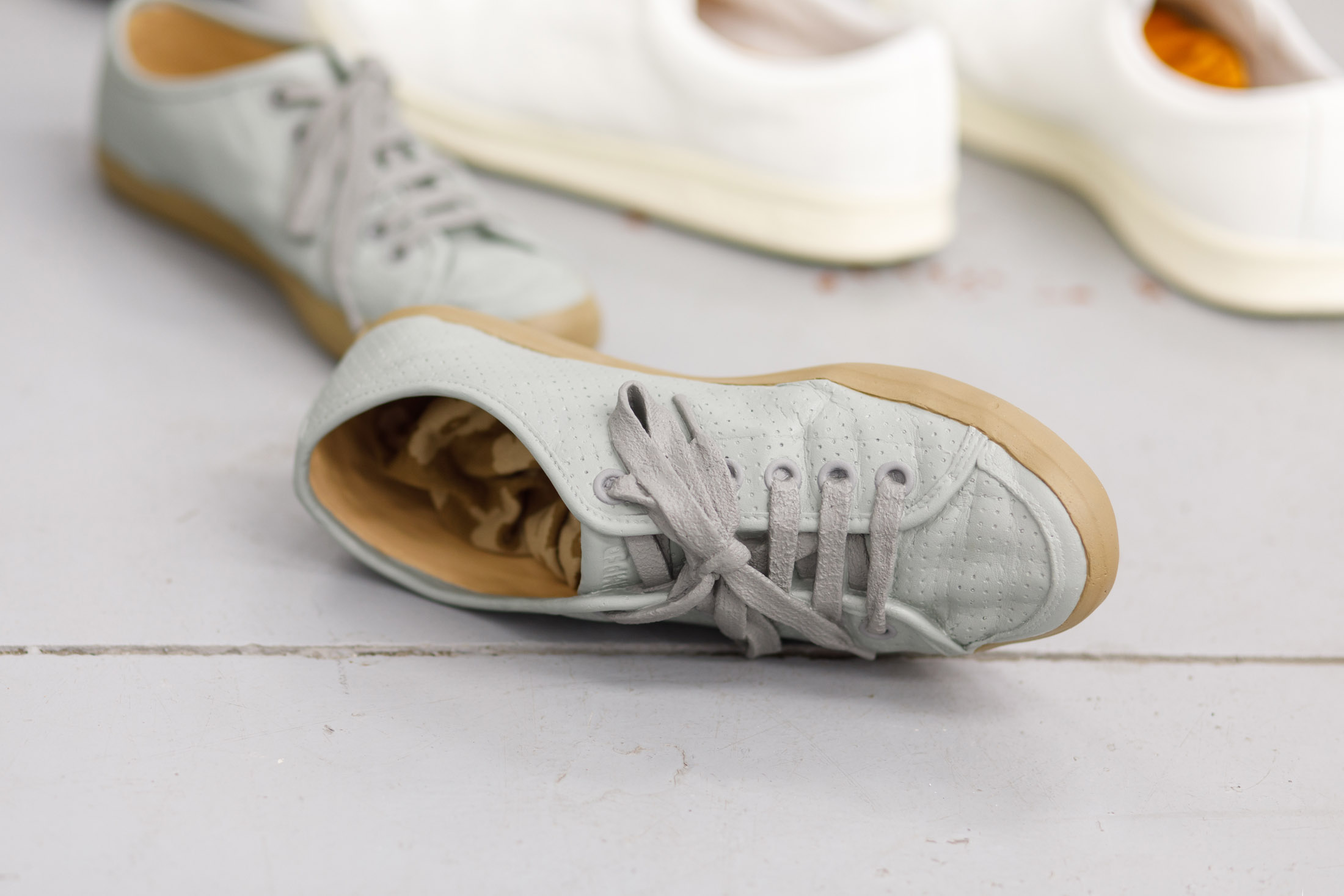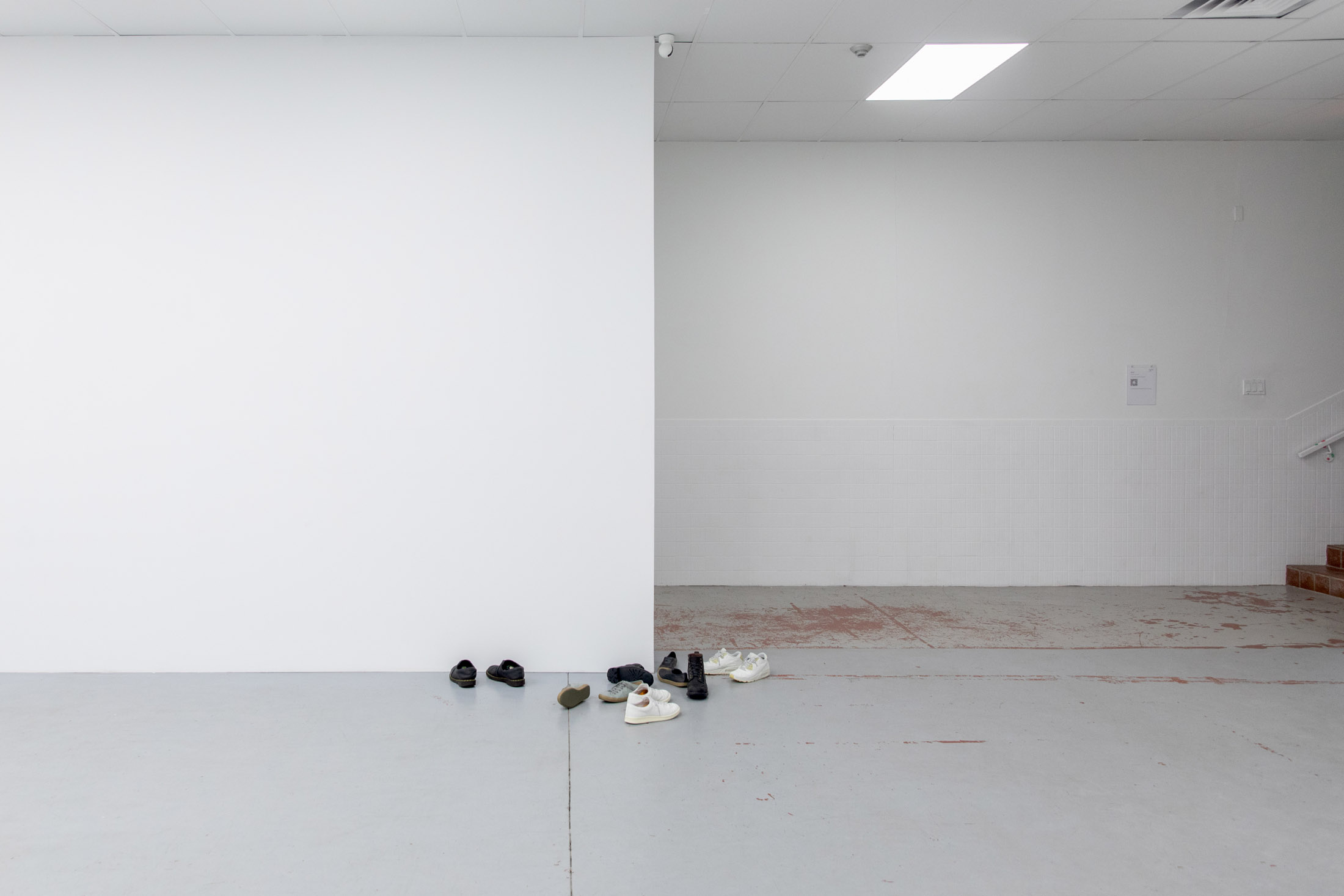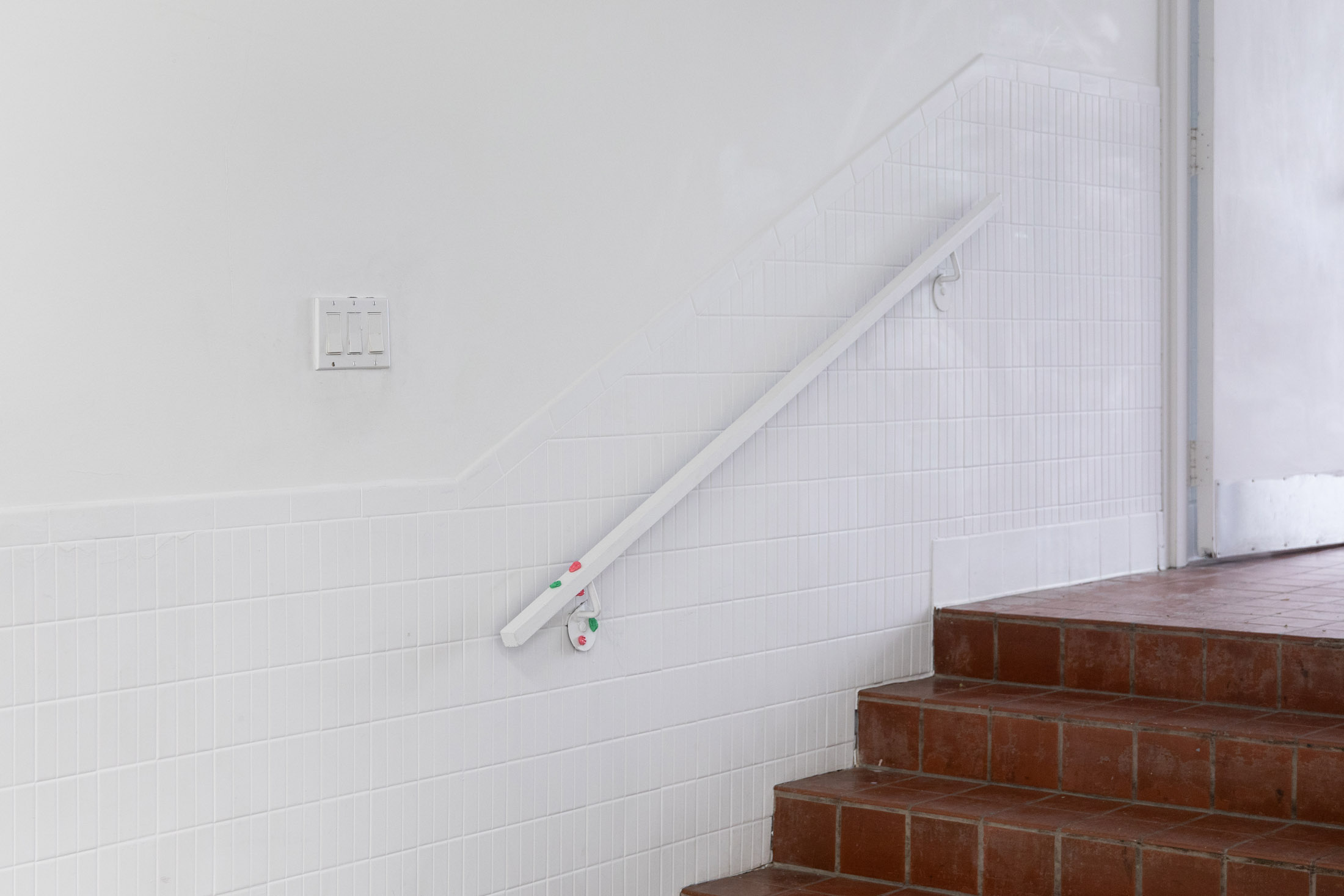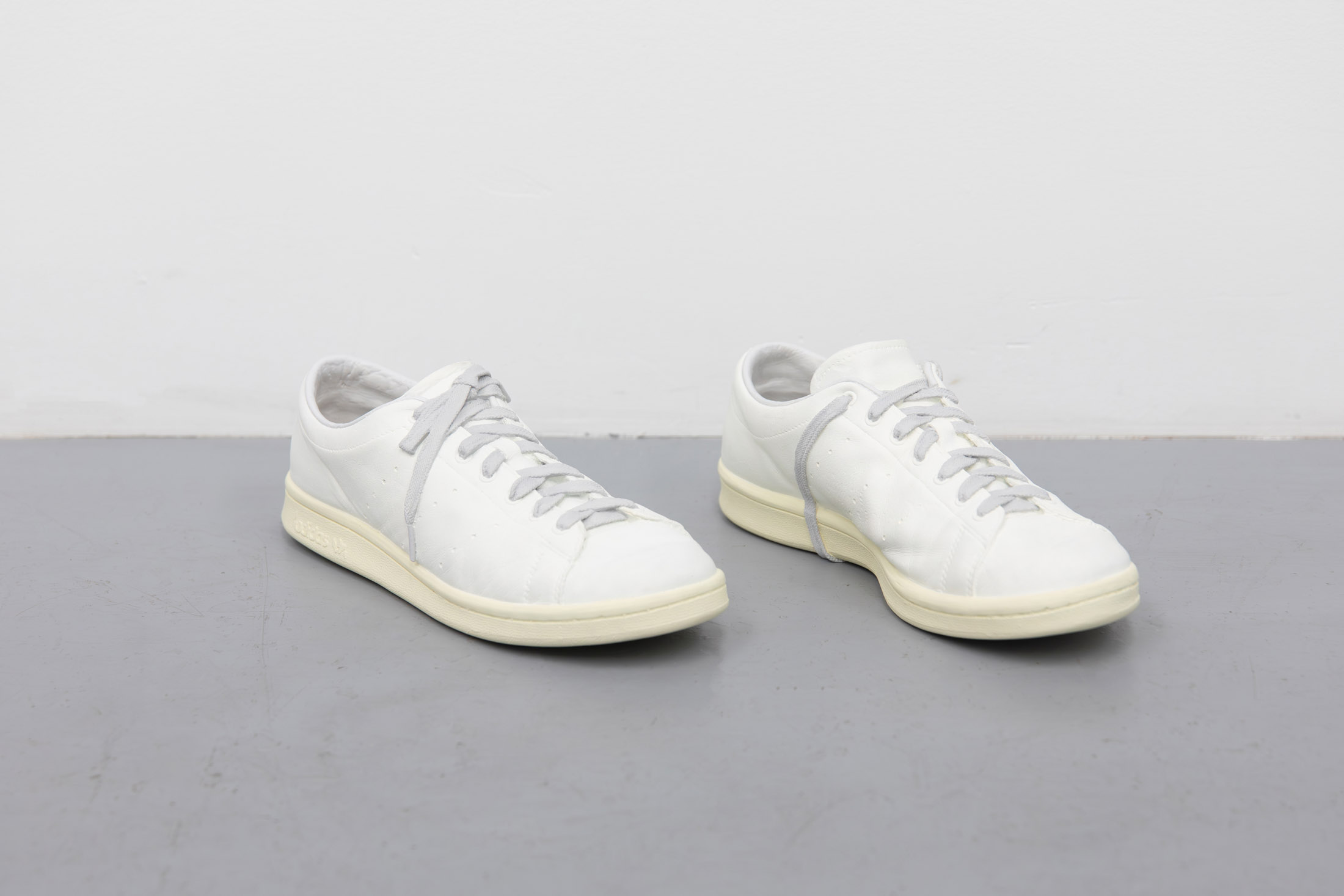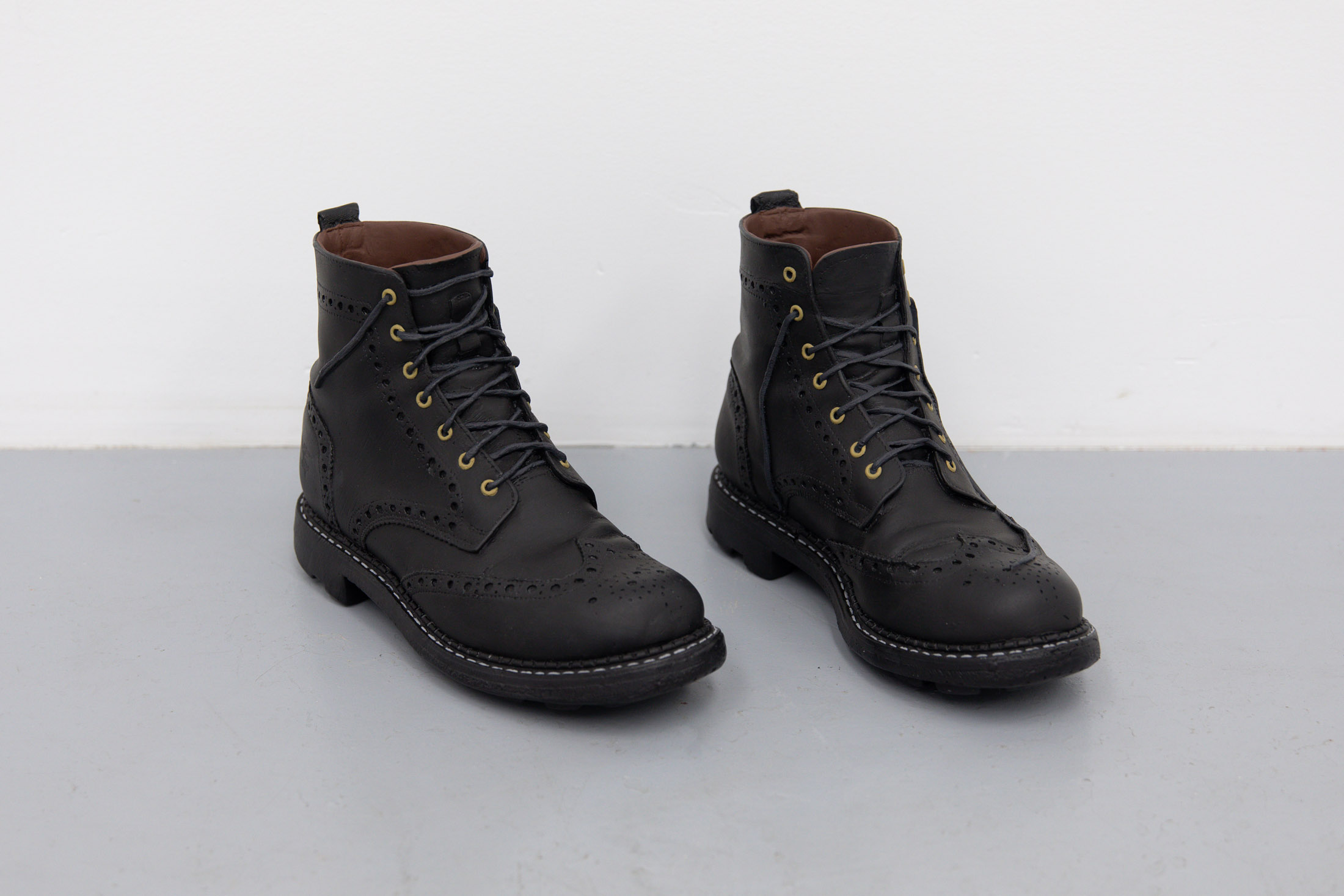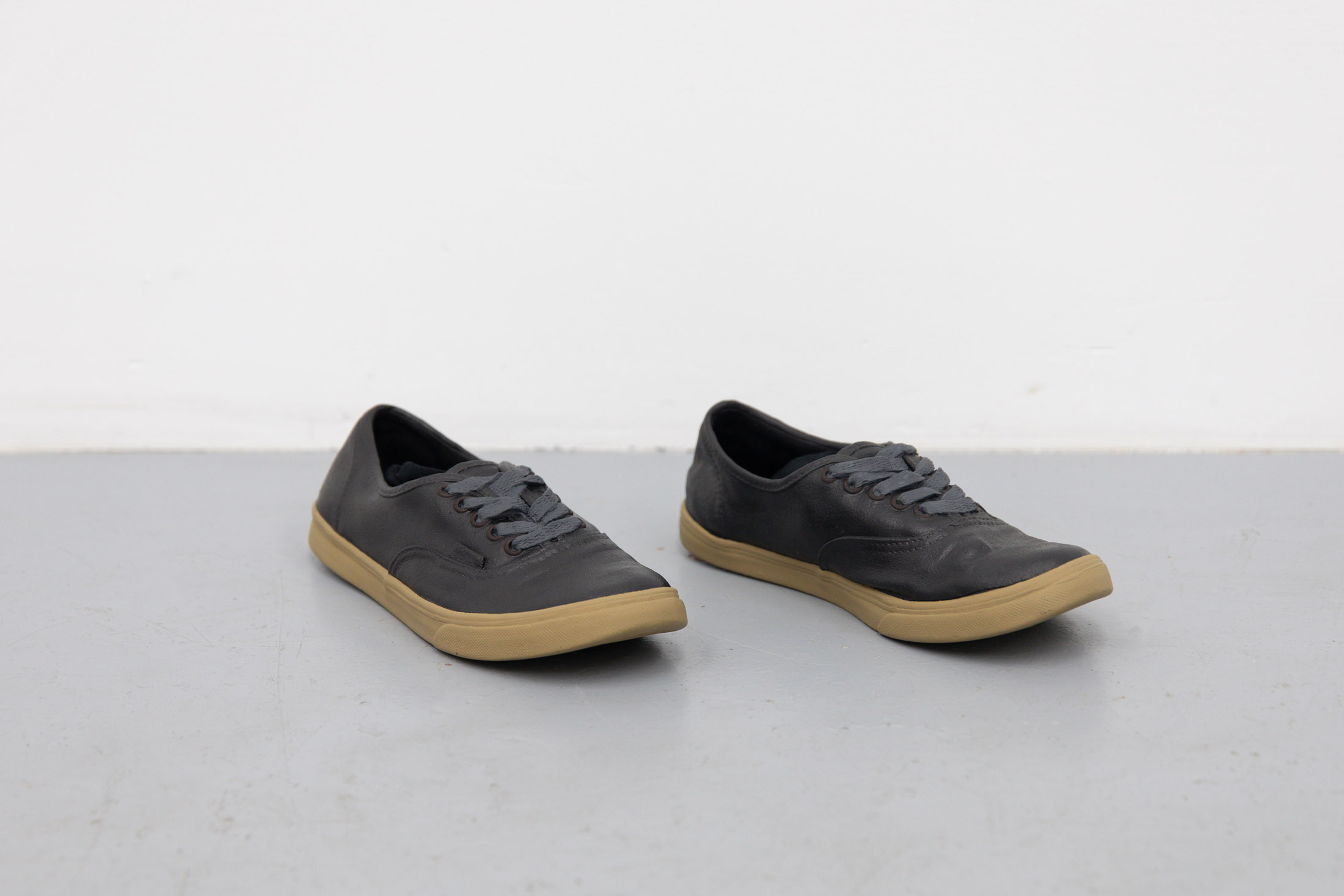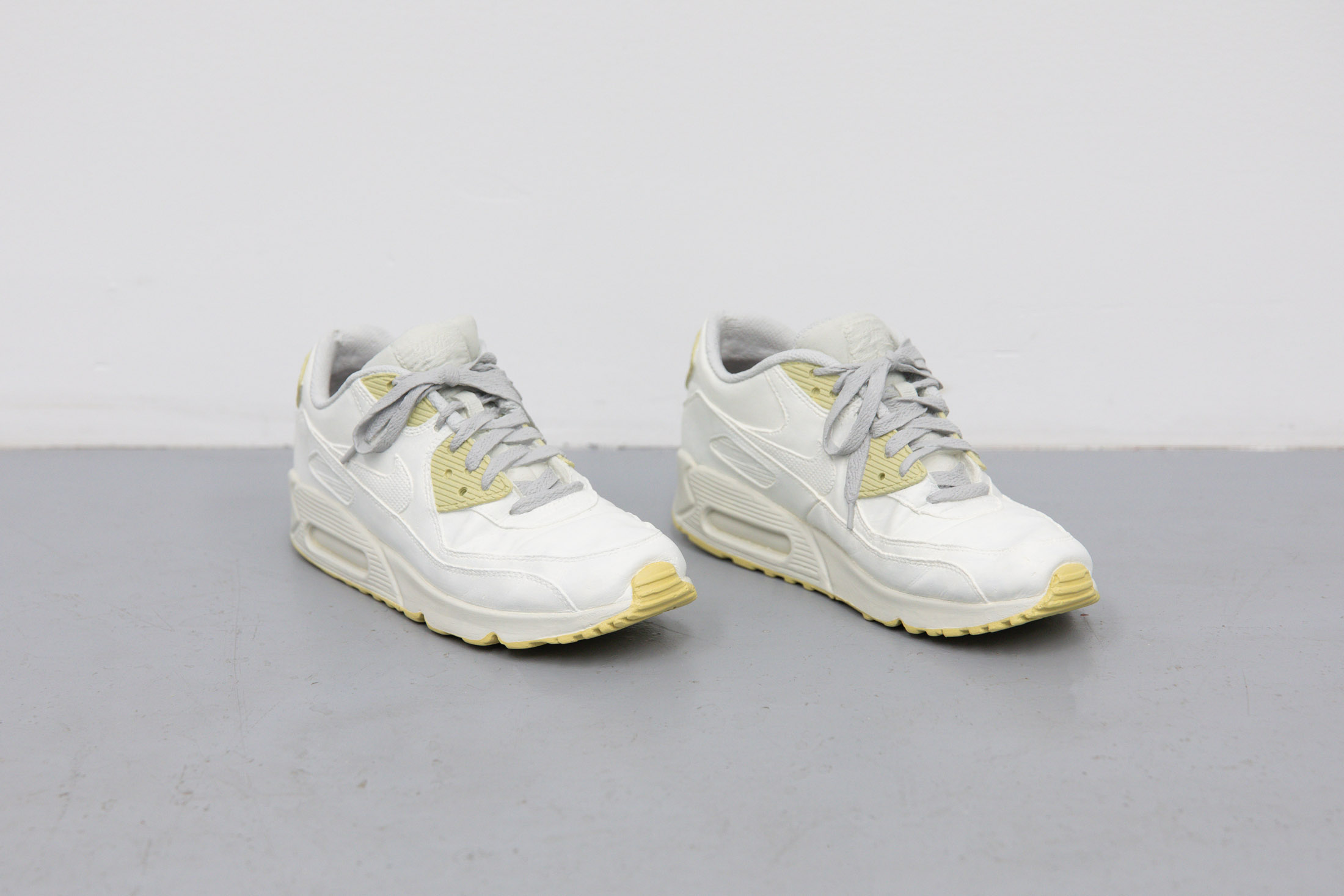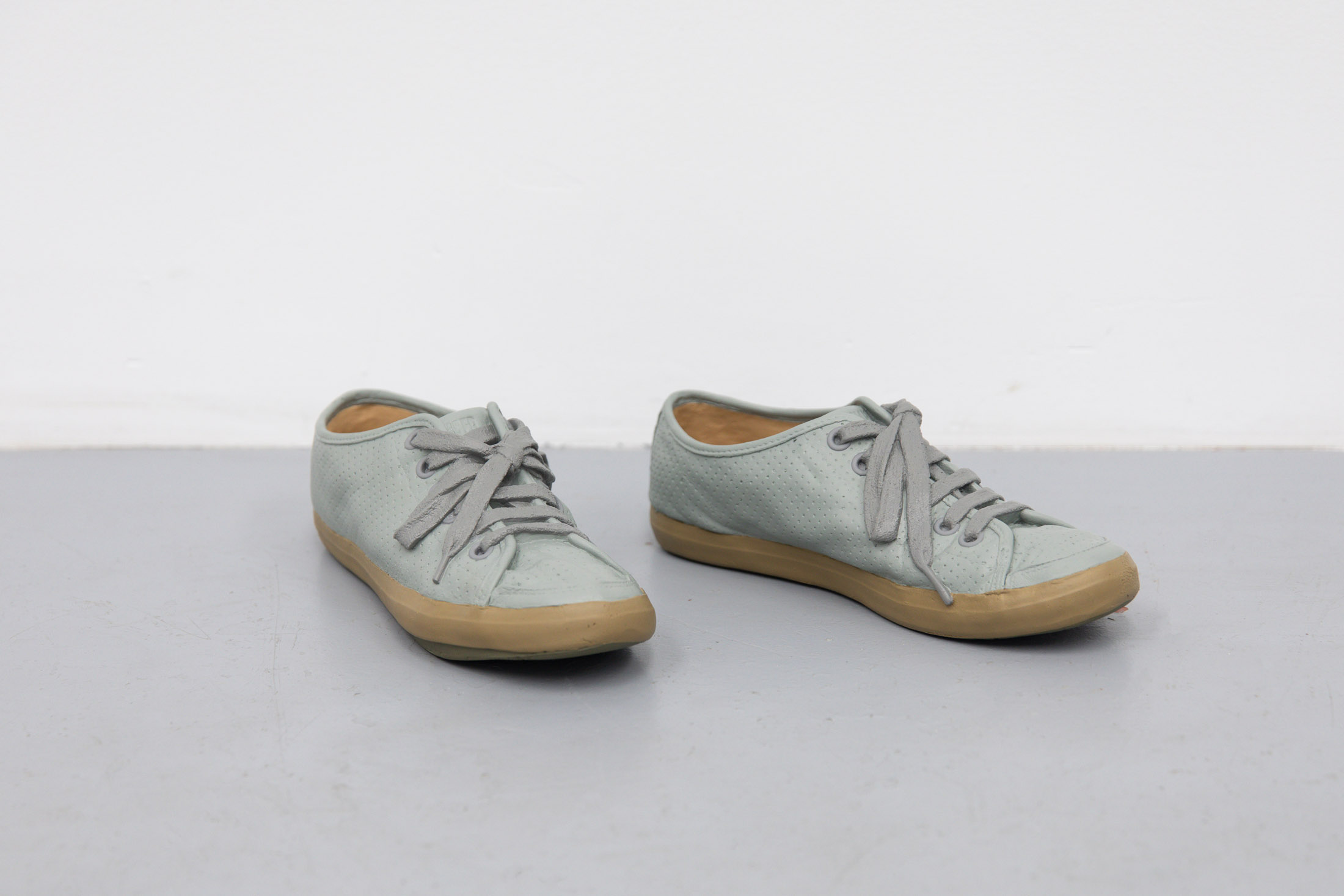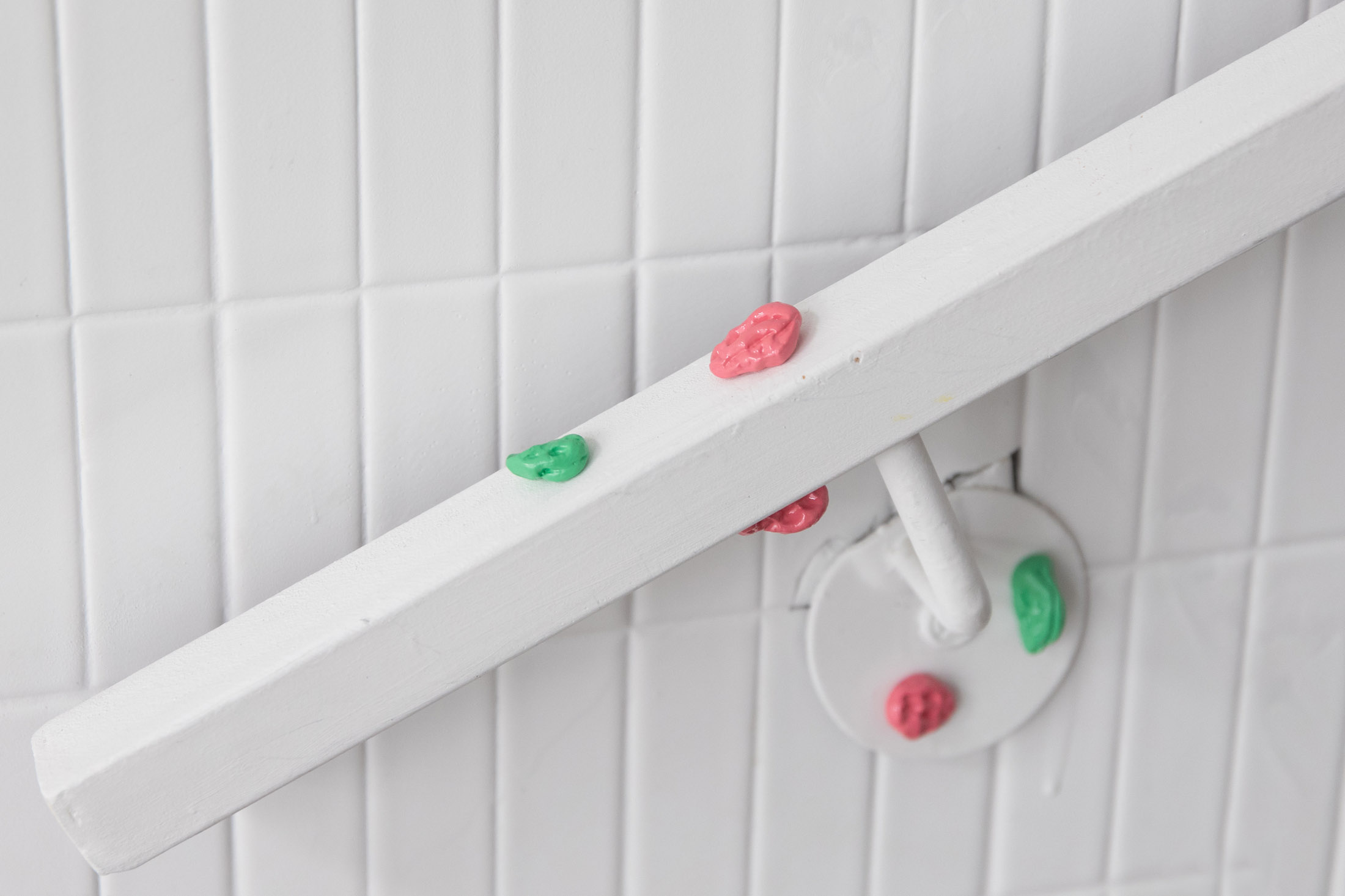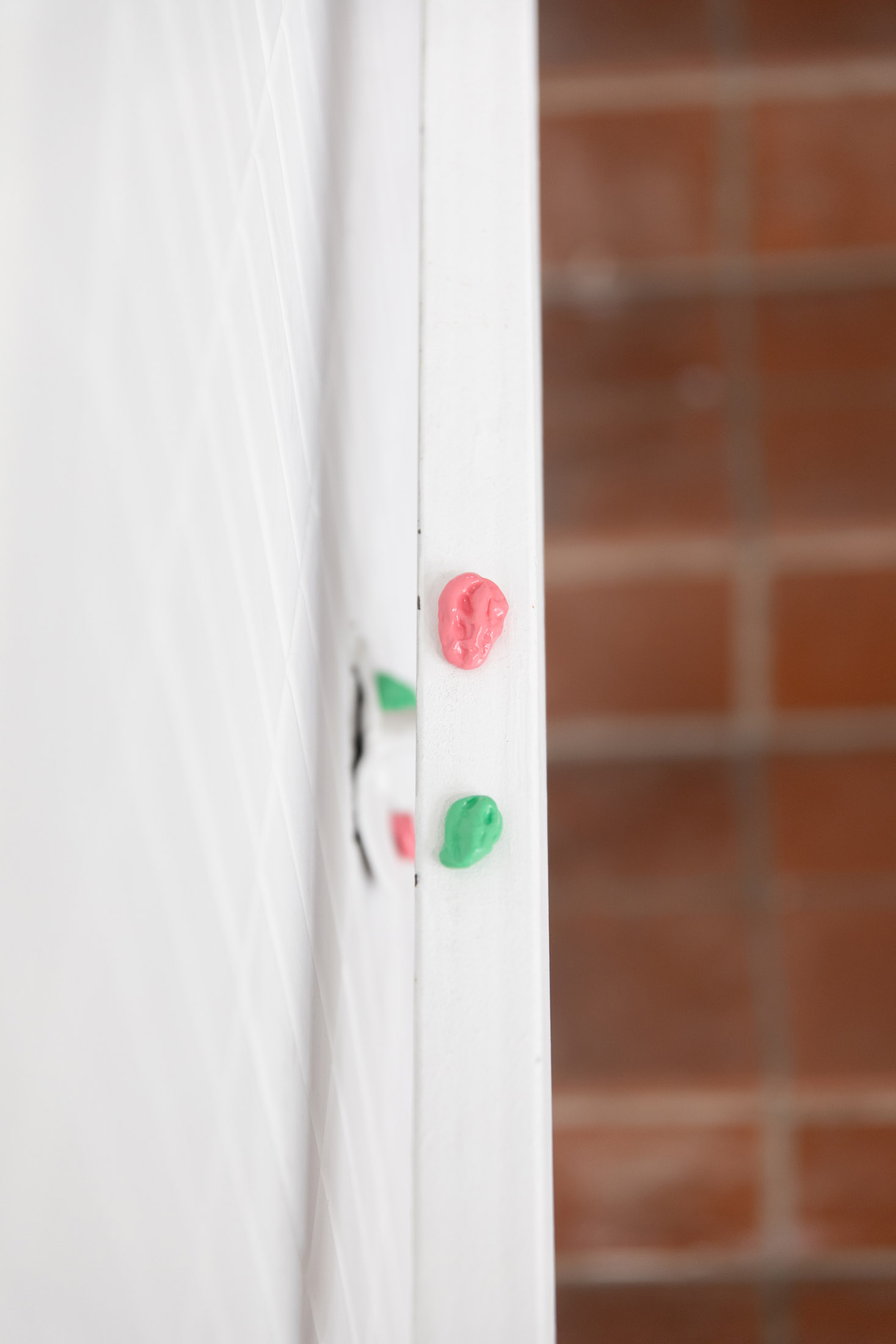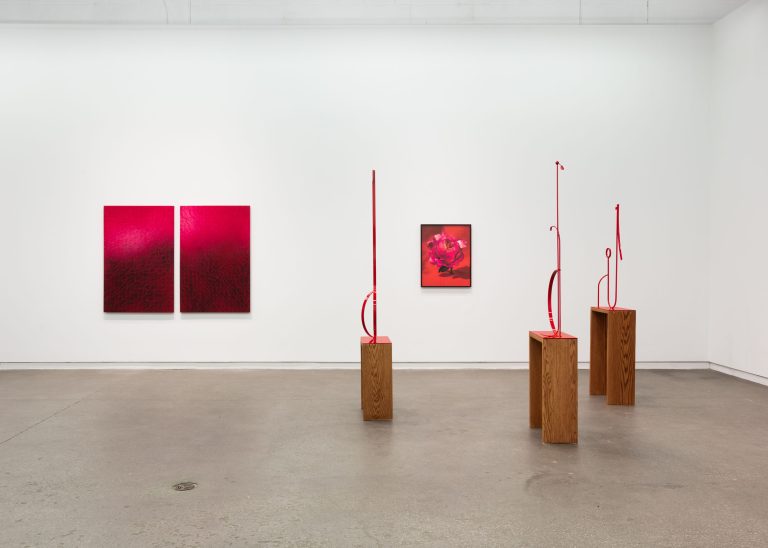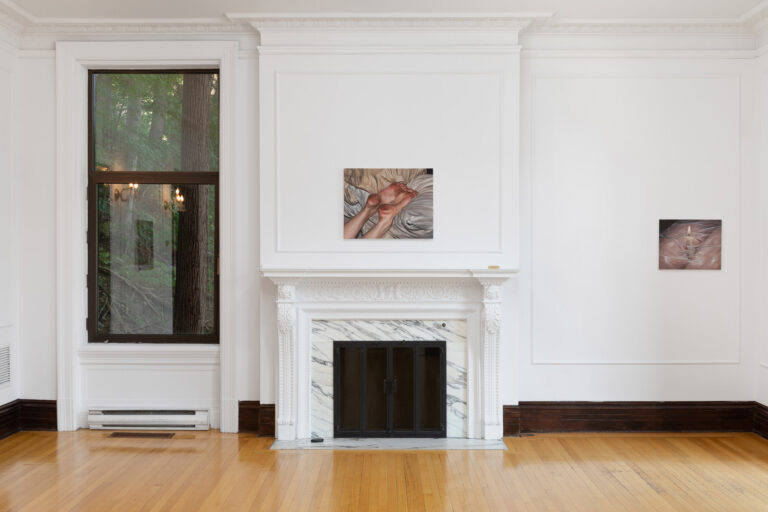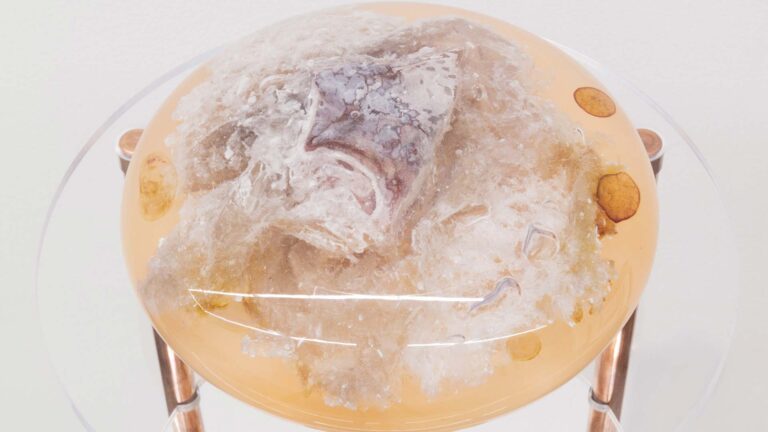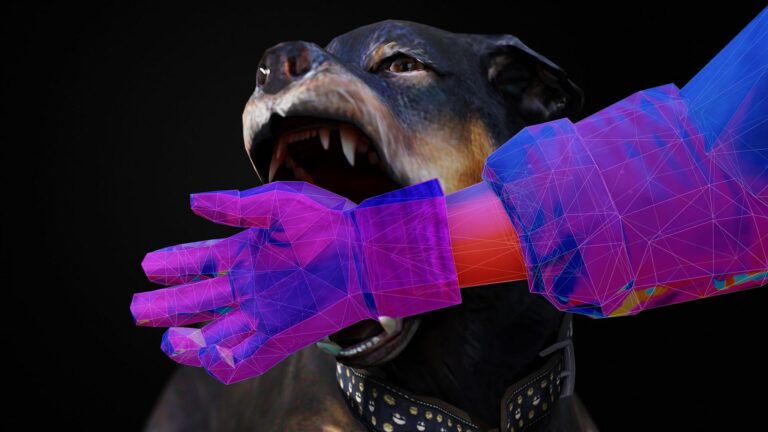Artist: Van Maltese
Exhibition title: I saw her duck
Venue: COOPER COLE, Toronto, Canada
Date: November 17, 2023 – January 20, 2024
Photography: all images copyright and courtesy of the artist and COOPER COLE, Toronto
COOPER COLE is pleased to present, I saw her duck, a solo exhibition by Van Maltese. This exhibition marks the artists fourth solo exhibition with the gallery.
The following text by Jenine Marsh accompanies the exhibition.
A familiar scene: in the entranceway, the hall, or the boot room, are a pile of shoes and a full-length mirror. But over this threshold, in my home, living alone, I hardly have a body. Without much need of reflections or clothes, the psychic and physical worlds dissolve, unified. In Queer Phenomenology, Sara Ahmed writes, “(l)oving one’s home is not about being fixed into a place, but rather it is about becoming part of a space where one has expanded one’s body, saturating the space with bodily matter: home as overflowing and flowing over.” (11) In the boot room though, this interval between indoors and outdoors, public and private, are the empty mirror and sneakers in which I now find myself laced up, outfitted, and reflected in. On my way outwards, I pause at the mirror because I want to remember how I look, so that I can interpret the looks I receive. I will try to hold this image in my mind as I go, to where I will suddenly be visible. I pause to check myself out – am I ready to be seen?
Van Maltese’s I saw her duck expands and unfolds this Mise-en-scène into a sort of still-life of still-lives, or a doubly-deceptive trompe l’œil. French for “deceive the eye,” this trompe does not lead to smooth visual illusion, but to a trip and a fall down the deep rabbit hole of representation, where if you fall far enough, down becomes up and in becomes out. I saw her duck includes 8 vertically-oriented paintings titled Hypothesizing coincidence no. 1 – no. 8 . The paintings’ verticality and proportions make them figurative, though not quite life-sized – perhaps child-size, or the size of a hallway full-length mirror. Several of them seem to have been painted horizontally, then rotated 90 degrees. When landscape becomes portrait, what lies outside of self becomes personified, a relation, or a reflection. Have you ever measured your reflection, with a ruler on the glass?
Each painting shares the same compositional device; a depiction of accordion-folded sheets of paper, marked by doodled figures that tease equally towards Rorschach inkblots or childhood craft activities. A good inkblot test looks as little like anything as possible, so that what is seen in it can more surely be credited to the test subject. In it, our unconscious habits of perception can be diagnosed, possibly revealing something we have always seen but not yet known. But how to know what images are meaningful, and which are an error of perception?
Counterintuitively, instability resonates throughout Maltese’s fastidiously painted surfaces. And they are very much that: surface. Flat and opaque sections of colour suggest a shadow, an angle, and a form, meticulously constructing graphically-abstracted still-lives, like a sort of highly advanced paint-by-number. Representational painting, sharp edged or not, is always likewise instructed.
Representation puts each painted point in imagined linear contact with its real other, to produce an image which parallels reality, one-to-one. Alternatively, Maltese’s incongruent surfaces do not (consistently) connect point-to-point, and the lines between their images and reality are not (always) parallel. When is an image not an image?
In Maltese’s works and the conversations that they generate, optical illusions and word-play find themselves in close company. For most illusions, such as Rubin’s Vase, the image of two faces or a vase, the duck/rabbit illusion, or the ballerina GIF, which rotates both clockwise and counterclockwise, interpretation is both ambiguous and bi-stable. (Even the name Maltese can refer to a breed of dog or a fictional falcon.) The inkblot too fluctuates between two realities; one of random abstraction, and the other of image and significance. Maltese’s vertical paintings further the confusion by including sculptural additions on the outside of the image’s frame. Extending the limits of the painting into 3-dimensionality, the additions are removable and exchangeable, as they are affixed only with magnets. We are not permitted to think or talk of static, flat image alone, or to let image be stuck to its usual definitions. Image here also means object, also means non-image, also means temporal process and physical interaction. Like optical illusions or garden-path sentences or cockney rhyming slang, one thing means another means another means another.
The exhibition’s title plays along with the illusive process of perception. I saw her duck is a phrase with multiple readings. She ducked under something, and I saw. Or, I saw that she has a duck. But having a waterfowl is a weird thing, so the phrase begins to sound a little suggestive, even sexual: I saw her duck… When we chatted about Maltese’s exhibition over drinks, chicken fingers and a few baby cockroaches at a Bloor Street sports bar, I asked Maltese why “her”? Why not a more ambiguous, and possibly autobiographical “their”? Their plural, their non-binary. Maltese thought about it but realized that the shift in pronoun curtailed the multitude of readings. I saw their duck can’t also have the active verb meaning of tucking under something to avoid a head-cracking. I saw them duck has the reverse issue – active but not possessive. Masculine pronouns have the same limitation of precision. Their/them, his/him, or simply her. The English language! So, the title poked a hole in our conversation, revealing gender and orientation as being subtly woven into Maltese’s deconstruction and mis-usage of normative processes of representation of perception.
I can’t pin down exactly how realistic or abstracted Maltese’s images are – what is playful creative license and what is accurate representation is indefinite and uncanny. Repeating down the paintings’ length are abstract blots and squiggles, cloud-like blobs, handprints that become chickens, stick figures and yellow suns: graphics which conjure memories of kindergarten fingerpainting. These nostalgic moments of disordered play were often organized towards the directive of teaching a child how to follow instructions. Fold your wet, haphazard painting in half, apply pressure, unfold, and reveal a surprise: a mirrored image, a doodle doubled. As our messy marks are re-organized around the straight line folded down the middle, creative play is almost magically homogenized into a disciplinary pattern, and our ability to follow directions is rewarded by a visually balanced outcome. We have learned to turn our play into something that both looks good and is legible – we’re artists!
The works are graphic and flat, with simplified areas of colour and line, but so are the ink on paper folded doodles that the paintings precisely reproduce. What look like short strips of green painter’s tape on several of the paintings is actually an area of perfectly tinted green paint. Although these areas’ sharp edges have been defined by tracing real pieces of tape, they are painted entirely by a very steady hand. The tape hints towards a typical technique in painting hard-edges, a trick of the trade. But this hint misleads and deviates from truth, forcing doubt into all we think we see.
Recognition and its deconstruction fluctuate. Flat doodle contends with illusionistic trompe l’œil, abstraction butts up against still-life, and representation flips inside-out to become a temporal, troubled process.
Scattered around the eight paintings are several strewn pairs of shoes. The cast-off Doc Martens and sneakers may be evidence of a home gathering, where friends in bare feet drink wine and eat comedic amounts of chips, somewhere in the home’s deeper, intimate interior. Closer looking – the kind of looking that does not seek gratification in illusion alone – will perceive that although the shoes are evenly coloured and un-scuffed as if brand-new, their creased skins carry signs of heavy wear and age. Revealed to be carefully painted bronze casts of discarded shoes, the shoes carry the weight of their material value and historic lineage.
Not so long ago, we begrudgingly learned that Classical Greek statues were originally painted to be life-like, with natural skin-tones, richly coloured garments, gold-leafed jewelry and armor. However, most of us have collectively elected to forget this vulgar history, in favor of our “more classic” ideal of stark and unpainted bronze and marble sculpture. How could art history possibly approve of the two traditional disciplines of visual art perversely co-mingling in the painted sculpture? Our normative perception of painting and sculpture mirrors that of our lived, embodied reality, which is forcibly compartmental, disciplinary and binary.
Maltese co-opts this electively forgotten perversion of history to generate a condition of undisciplined perception. Their cast-off cast shoes and mirror-like mirrored paintings create instabilities between reality and representation, image and object, intuition and discipline. Inhabiting and animating the in-between – the boot rooms of lived reality – they reframe representation and perception as mutually dependent acts, oscillating between normative habit and rogue agency. In Maltese’s queer reality – a-synchronically fluxing, bi-stable and ambiguous – the gallery-as-threshold becomes a trompe l’œil in the round, a life-sized still-life. What is real and what is the performance of the real is here a moot distinction.
I saw her duck is the performance and process of destabilizing and queering representation and perception. In the painted painter’s tape, in the mirror’s mirrored doodle, in the painted sculpture or sculptural painting, and in the eye’s deception, are moments of inside-out or upside-down self-referentiality and self-denial. Like the perverse duck, there are many ways to go, none of them straight. As Jack Halberstam writes in The Queer Art of Failure, “to live out a politics of disorientation might be to sustain wonder about the very forms of social gathering.” (24) In this boot room threshold, our lines of relation are intimately tangled, and reflected back to us changed and rewritten, exuding the chaos of childhood and the optimism of youth. Overflowing and flowing over, our gathered bodies mark a longing to remake the world as our home.
– Jenine Marsh, 2023
Van Maltese (b. 1988, Toronto, Canada) deploys various forms of trickery and illusion to pose questions about perception. Maltese is interested in the plasticity of the brain, and how conflicts of perception have the power to change our methods of thinking, even in common everyday experiences.
Maltese earned a BFA from OCAD University in 2010. Maltese was awarded the national prize of the 2012 RBC Canadian Painting Competition, and the Canadian prize of the 2018 Glenfiddich Artist-in Residence Program. Most recently, Maltese was in residence at the School of Art and Design at Alfred University as the 2023 International Randall Chair in Painting. Maltese has participated in solo and group exhibitions across North America including, Mickey Gallery, Chicago; Night Gallery, Los Angeles; The Power Plant, Cooper Cole, Art Museum of the University of Toronto, Erin Stump Projects, Toronto; the National Gallery Library and Archives, Ottawa; Carl Louie, London ON; Kate Werble Gallery, Nicelle Beauchene Gallery, and Greenpoint Terminal Gallery, New York. Maltese’s monumental public artwork “subject to change” can be seen at RBC’s Waterpark Place in downtown Toronto. Maltese currently lives and works in Toronto, Canada.
Van Maltese, I saw her duck, 2023, exhibition view, COOPER COLE, Toronto
Van Maltese, I saw her duck, 2023, exhibition view, COOPER COLE, Toronto
Van Maltese, I saw her duck, 2023, exhibition view, COOPER COLE, Toronto
Van Maltese, I saw her duck, 2023, exhibition view, COOPER COLE, Toronto
Van Maltese, I saw her duck, 2023, exhibition view, COOPER COLE, Toronto
Van Maltese, I saw her duck, 2023, exhibition view, COOPER COLE, Toronto
Van Maltese, I saw her duck, 2023, exhibition view, COOPER COLE, Toronto
Van Maltese, I saw her duck, 2023, exhibition view, COOPER COLE, Toronto
Van Maltese, I saw her duck, 2023, exhibition view, COOPER COLE, Toronto
Van Maltese, I saw her duck, 2023, exhibition view, COOPER COLE, Toronto
Van Maltese, I saw her duck, 2023, exhibition view, COOPER COLE, Toronto
Van Maltese, I saw her duck, 2023, exhibition view, COOPER COLE, Toronto
Van Maltese, I saw her duck, 2023, exhibition view, COOPER COLE, Toronto
Van Maltese, Habit, 2023, Enamel on bronze, magnet 1x 3/4 x 1/2 in (2.5×1.9×1.3cm)
Van Maltese, Habit, 2023, Enamel on bronze, magnet 1x 3/4 x 1/2 in (2.5×1.9×1.3cm)
Van Maltese, Habit, 2023, Enamel on bronze, magnet 1x 3/4 x 1/2 in (2.5×1.9×1.3cm)
Van Maltese, Ari (company), 2016, Oil on cast aluminium 4x4x12in (10.2×10.2×30.5cm)each
Van Maltese, Georgia (company), 2016, Oil on cast aluminium 7.5×4.25x11in (19.1×10.8×27.9cm)each
Van Maltese, Simon (company), 2016, Oil on cast aluminium, 4.75 x 4.5 x 12.5 in (12.1 x 11.4 x 31.8 cm) each
Van Maltese, Val (company), 2016, Oil on cast aluminium 2.75×3.5x10in (7×8.9×25.4cm)each
Van Maltese, Abby (company), 2018, Oil on cast aluminium, 5×3.5×10.5in (12.7×8.9×26.7cm)each
Van Maltese, Caitlyn (company), 2023, Oil on cast bronze, socks, 2.75×3.25×10.25in (7×8.3x26cm)each
Van Maltese, Habit, 2023, Enamel on bronze, magnet 1x 3/4 x 1/2 in (2.5×1.9×1.3cm)
Van Maltese, Habit, 2023, Enamel on bronze, magnet 1x 3/4 x 1/2 in (2.5×1.9×1.3cm)



